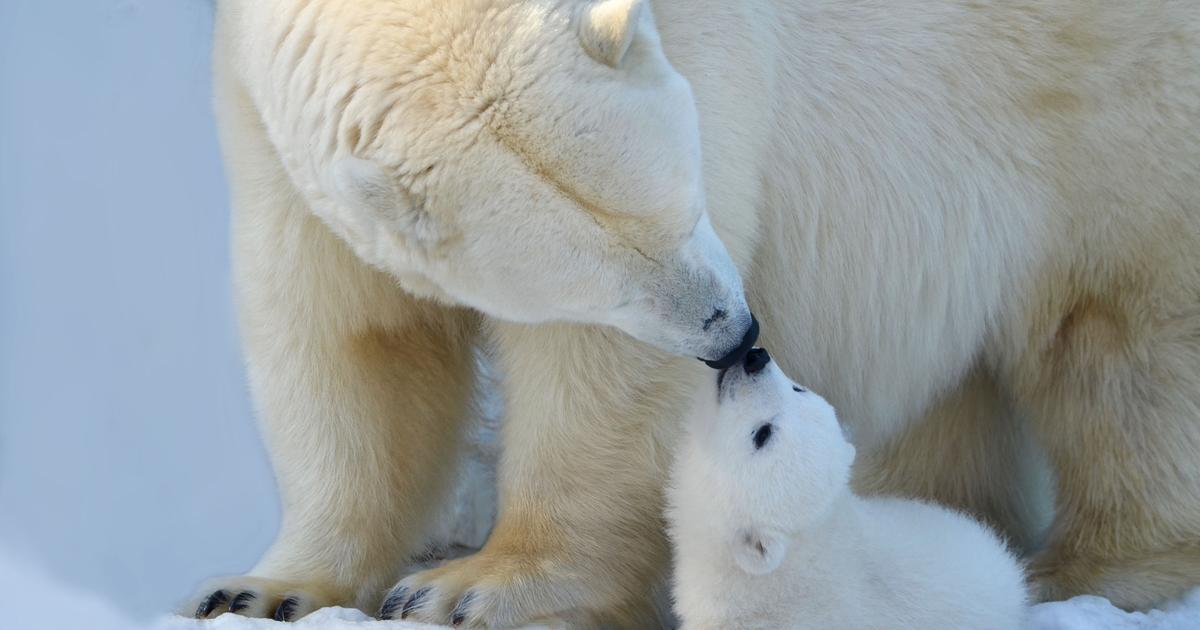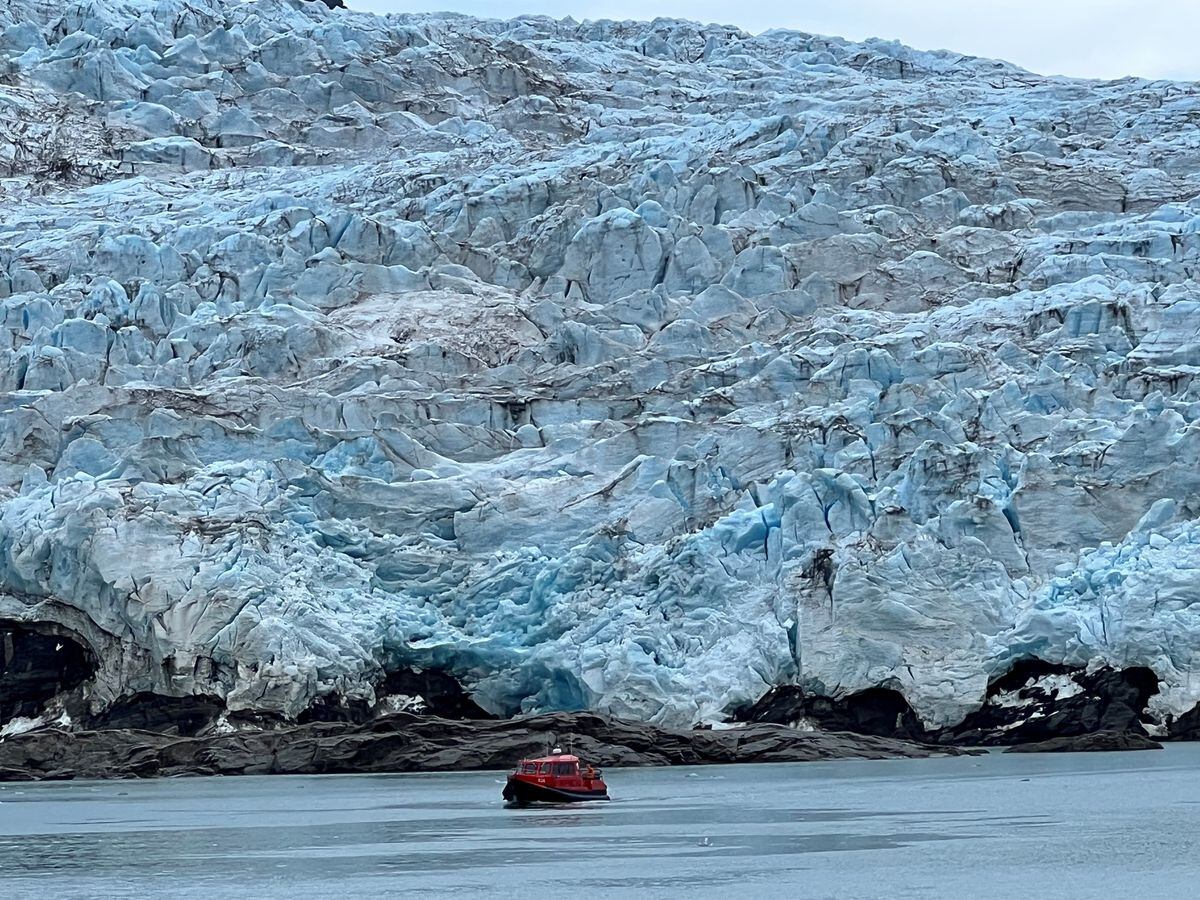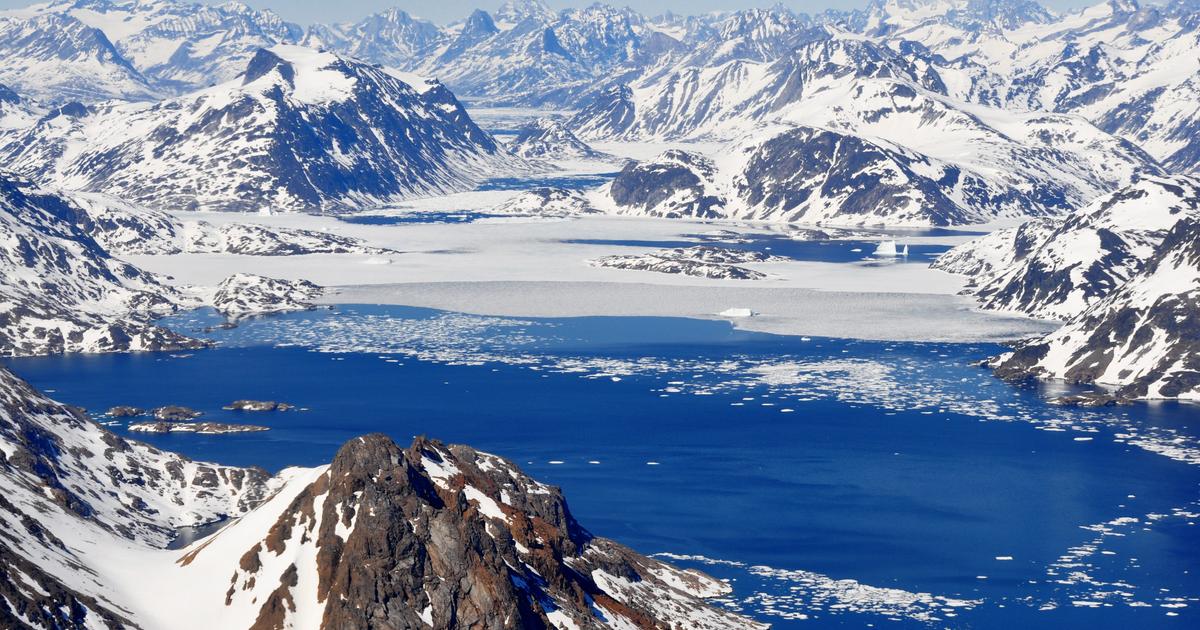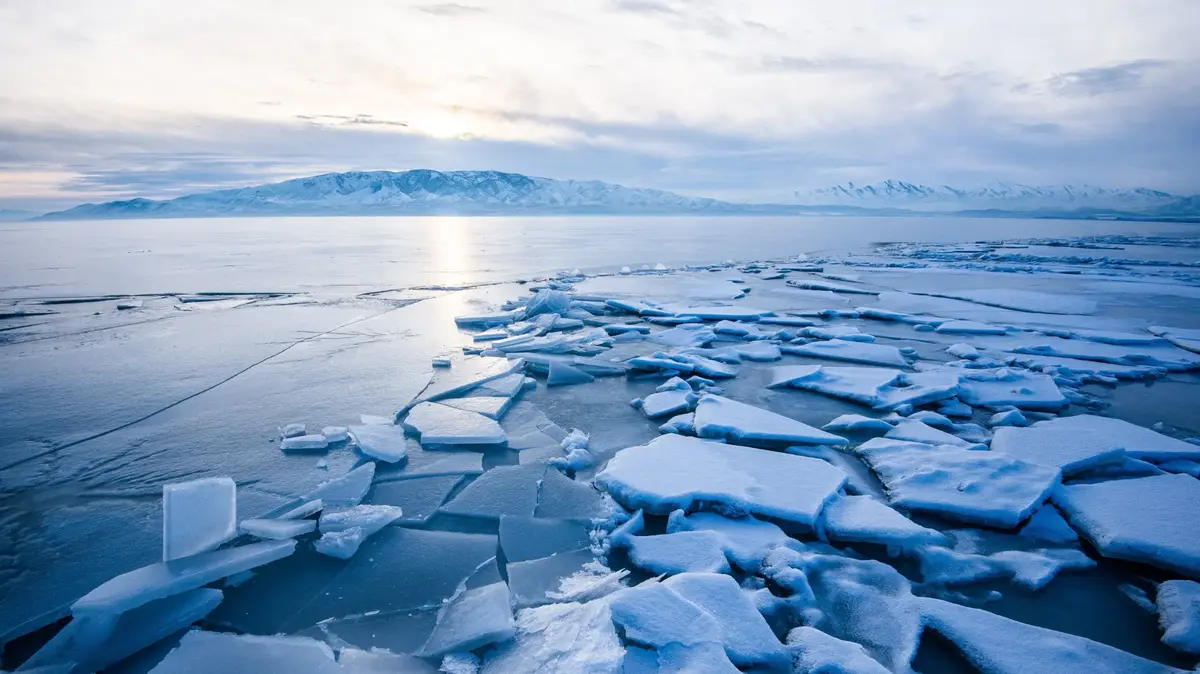Political posters, environmental campaign videos, press articles... In less than thirty years, the polar bear has quickly been propelled onto the media, political and associative scene, to become a leading symbol of climate change.
To discover
LIVE - Pensions: follow the new day of demonstration against the reform this Wednesday
The animal, very charismatic and fascinating, was very quickly perceived at the end of the 20th century as an element capable of awakening the general public to environmental issues.
"
If we want to talk about the average warming of temperatures, which is faster at extreme latitudes, especially in the North, with consequences on the rapid reduction of the sea ice, the polar bear is the animal that best illustrates it"
, says Jérôme Frignet, director of programs for Greenpeace France.
The iconization of the ursid nevertheless raises questions by the sometimes abusive use of its image, in particular by the spreading of false information, or its reductive aspect.
“
We make him say a lot of things, we use him and it becomes counterproductive
,” denounces Rémy Marion, specialist in the polar region.
A process of iconization
At the end of the 20th century, when the climate issue landed in the global politico-media field, in particular with the publication of the first report of the Intergovernmental Panel on Climate Change (IPCC) in 1990 or the summit of the Land of Rio de Janeiro in 1992, the polar bear very quickly became the symbol of the melting of the sea ice, and more generally of climate change.
"
It's a way to reach people who are not sensitive to scientific reports, it's an emotional hook
," explains Jérôme Frignet.
It was at this time that
Time
released an alarmist weekly on climate change, the ursid on the cover.
The American magazine, which highlights the mammal on its tiny piece of ice and its distraught appearance, apostrophes the reader: “
Be worried.
Be very worried
”.
The polar bear, a symbol of global warming
Go to slideshow (3)
The clash of images works, the animal becomes a metaphor for global warming.
In 2008, Gerard Van der Leun's photo of a polar bear stuck on a piece of ice also perfectly achieves its objective: we understand the announced end of the species, due to the melting of the pack ice.
The image of the mammal also makes some political posters as in 2015 for the "
World March for the climate
".
Environmental associations also seize the animal to carry out poignant awareness campaigns.
Greenpeace released a startling video in 2010, where what looks like a piece of ice turns out to be the back of a...dead polar bear.
A charismatic animal
"
The polar bear is one of the charismatic animals, which are standard bearers for raising awareness of climate change
", comments Lamya Essemlali, president of Sea Shepherd France.
The ursid indeed makes it possible to deliver a message that appeals more, because of its charisma or its proximity to humans.
“
We tend to be more empathetic with mammals.
There is the dimension of enchantment that comes into play and which is difficult to explain,
” she adds.
The polar bear truly makes an impression, in particular because it is part of the megafauna, as Jérôme Frignet points out: “It is
an animal that is both very symbolic, very spectacular and with which the public can identify.
It's the same thing that happens with the lion in Africa or the whale for the oceans.
Lamya Essemlali adds: “
It is very difficult to raise awareness about sardines and hake.
The dolphin or the bear already leave with a sympathy capital.
»
Three polar bears on the ice floe in the Arctic.
Adobe stock - Incredible Arctic
A centuries-old fascination
"
What fascinates me, (...) is the omnipresence of these animals in cultures, news and our imagination
" analyzes Rémy Marion in his book
The bear, the other of man
.
The choice and highlighting of the ursid in the political and media space is in fact no coincidence, the animal has fascinated men since the dawn of time.
Already in prehistory, Cro-Magnon men cohabited with cave bears, they hunted the same prey in the same areas.
We can find traces of the mammal in the parietal art, as in the Chauvet cave in France.
A bear on the rock walls of the Chauvet cave, in Vallon Pont d'Arc, in Ardèche, on June 13, 2014. JEFF PACHOUD / AFP
The bear was even considered in Europe as the "
king of animals
" until medieval times, particularly among the Celts, Germans or Slavs.
This supreme distinction is granted to the invincible animals, which are at the top of the fauna.
While Christianization in the Middle Ages put an end to the veneration of this sacred animal, it remained a "
symbol of power and purity
" affirms Rémy Marion before adding "
The bear was the gift of kings, it was offered for his fur or the menageries
”.
This fascination is also found among the Inuit, an indigenous people of the Arctic, where the polar bear is part of the mythology.
“
Nanuq
”, the white bear in Inuit, designates both the animal and its spirit.
The largest predator in the Arctic is considered there as the "
king of the scary
" and a "
relative
" for the Inuit, underlines Rémy Marion, "
He was killed to eat, his skin was used to keep warm.
We apologized and thanked him for offering himself to us
.
Engraving of the hunt of a polar bear by the Inuits.
Adobe stock - Antiqueimages
Read alsoWho are the climatosceptics in France?
Attract global attention
The use of his image nevertheless raises questions, in particular by the peddling of false information, the diversion of truths or simply by his reductive aspect.
“We
leave the protection of the species.
We forget when we want to save the polar bear, that it is our way of life that is called into question
”, denounces Rémy Marion who is annoyed to see the polar bear used at all costs.
Environmental associations, which regularly use symbolic animals in their communication (notably the bear), do not share this opinion.
"
We have to play on the emotional string to arouse interest, it's just a means
", defends Jérôme Frignet of Greenpeace who nevertheless admits that his use is "
reductive
".
“
The polar bear is at the end of the food chain as a super predator.
It is an indicator of the overall state of the ecosystem
,” he adds.
"
If we don't manage to save charismatic animals, we won't be able to save anything else, because they have an advantage (empathy, editor's note) that the others don't have,
" says Lamya Essemlali of Sea Shepherd.
The specialist in the polar region, Rémy Marion, takes the example of the photo of a starving polar bear taken in 2017 by Paul Nicklen.
The shocking image of the animal's agony ignites the web and makes the rounds of the media to become "
the symbol of global warming
".
With hindsight, we realize that the death of the mammal would be rather linked to a health problem... "
It's a striking but misleading illustration, we must remain rigorous in the choice of images so that the message remains credible
" , laments Jérôme Frignet.
The specialist in the polar region recalls that contrary to popular belief, “
the polar bear is currently threatened with extinction, but not on the way to extinction.
The estimated population has grown from 10,000 individuals in the 1970s to around 26,000 today
.
The species is currently classified as “
vulnerable
” by the International Union for Conservation of Nature (IUCN).















